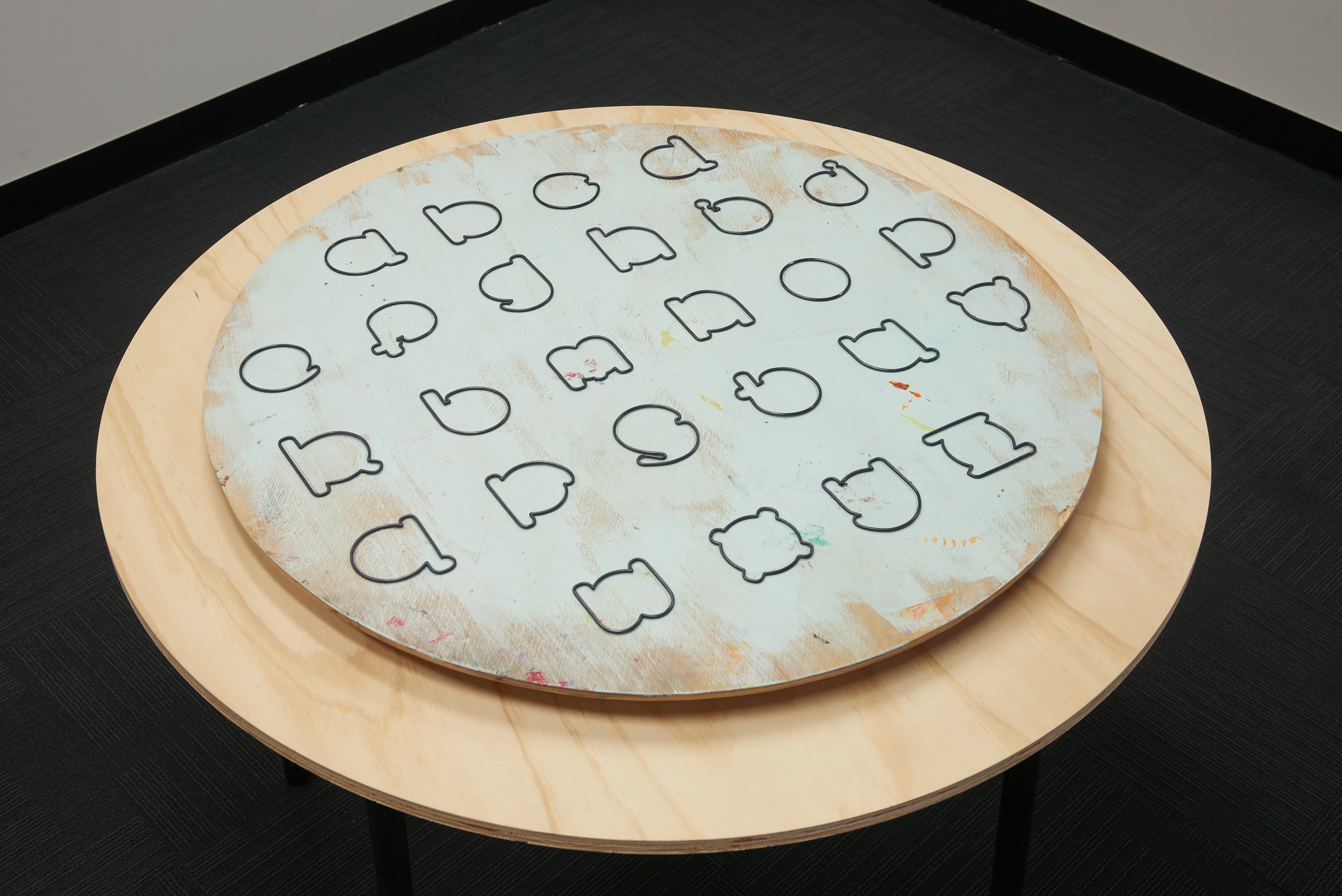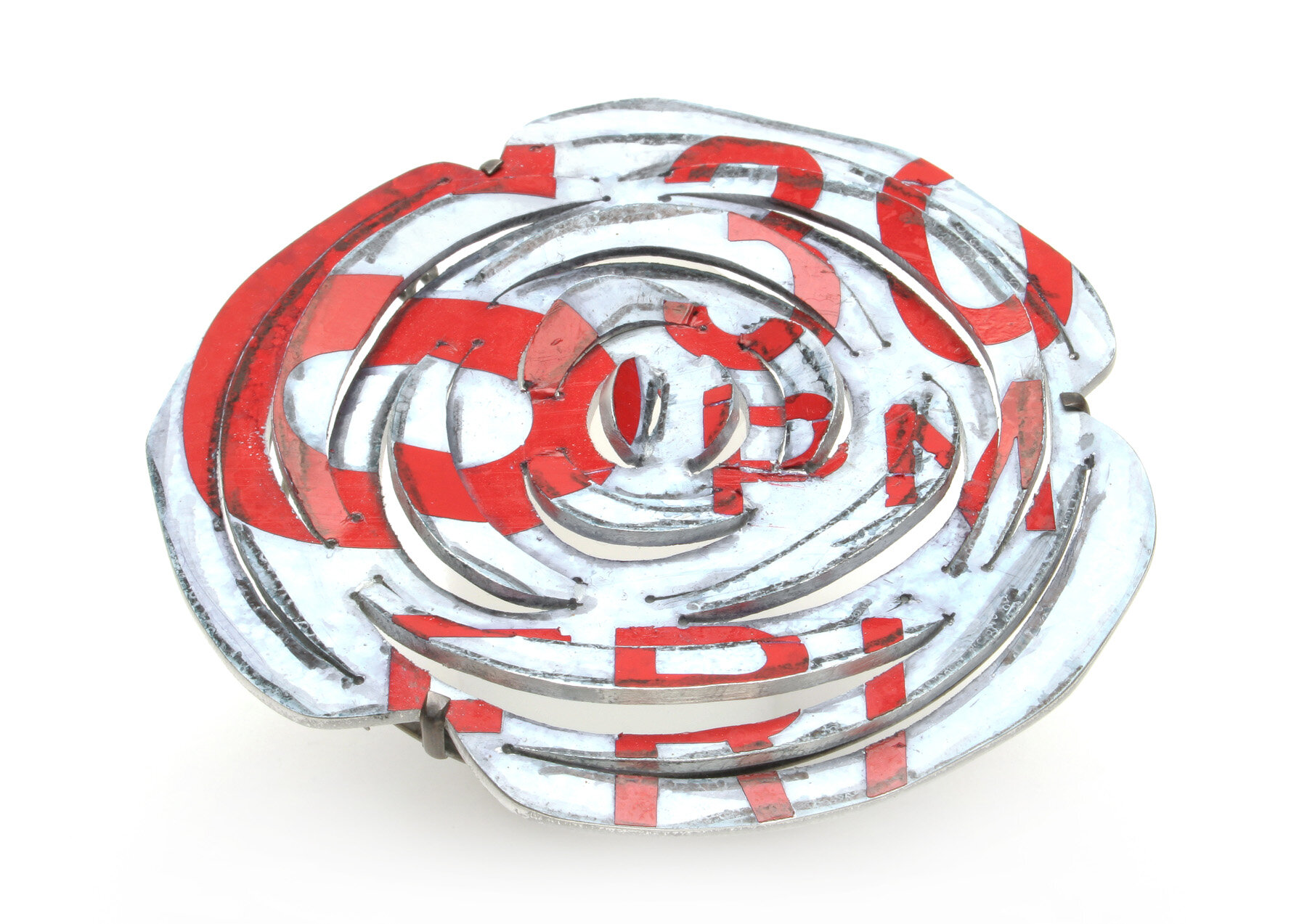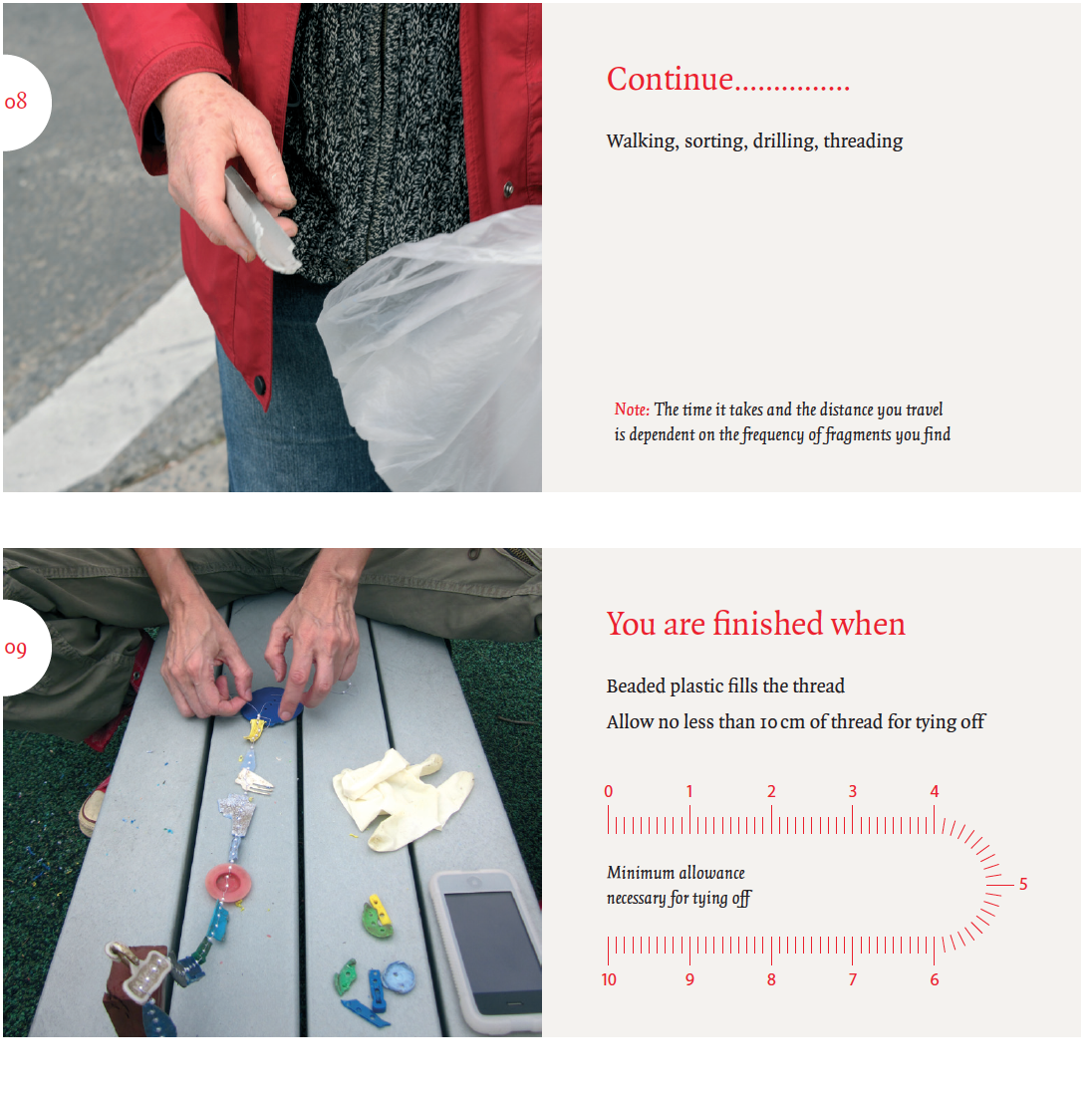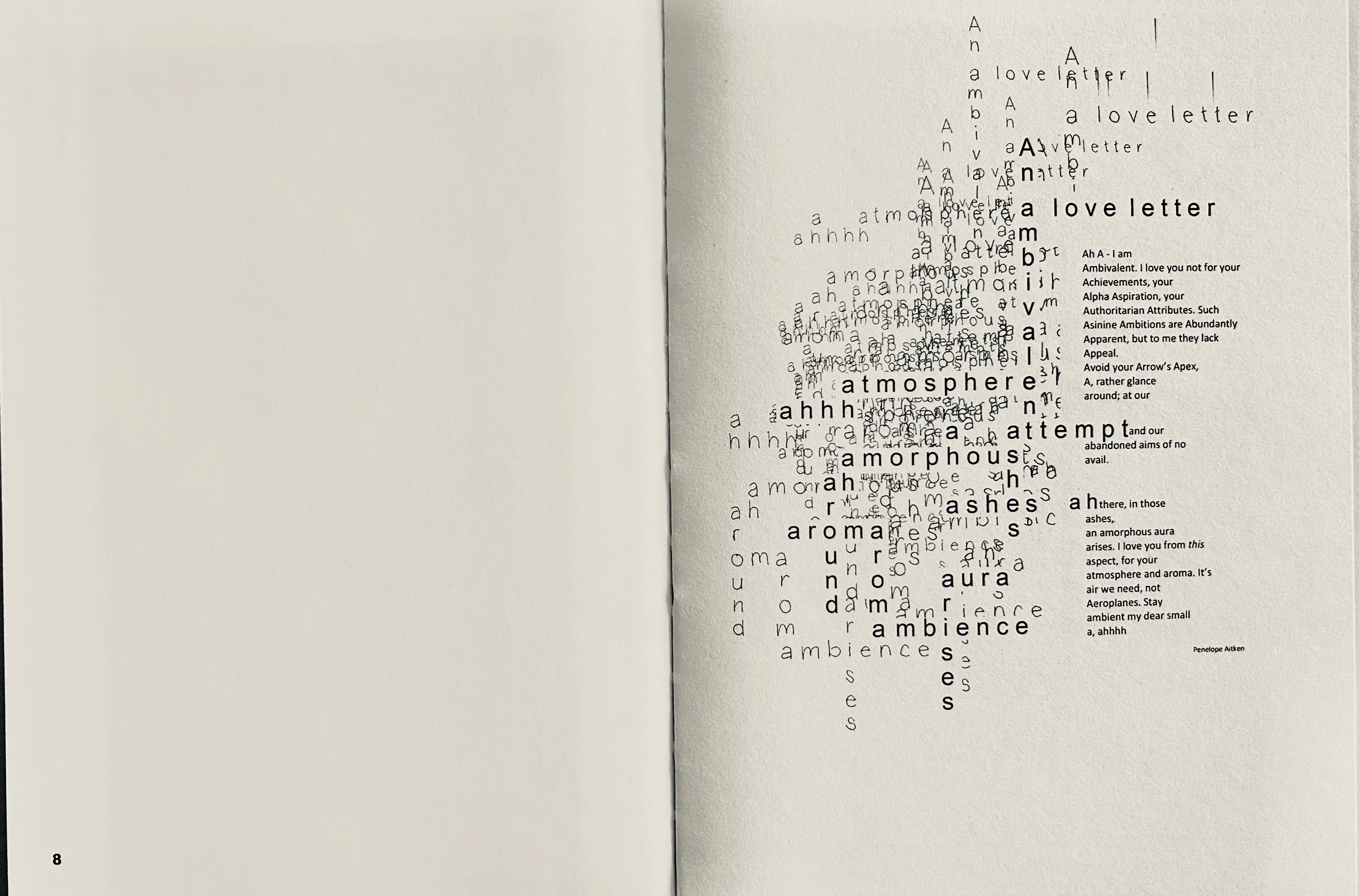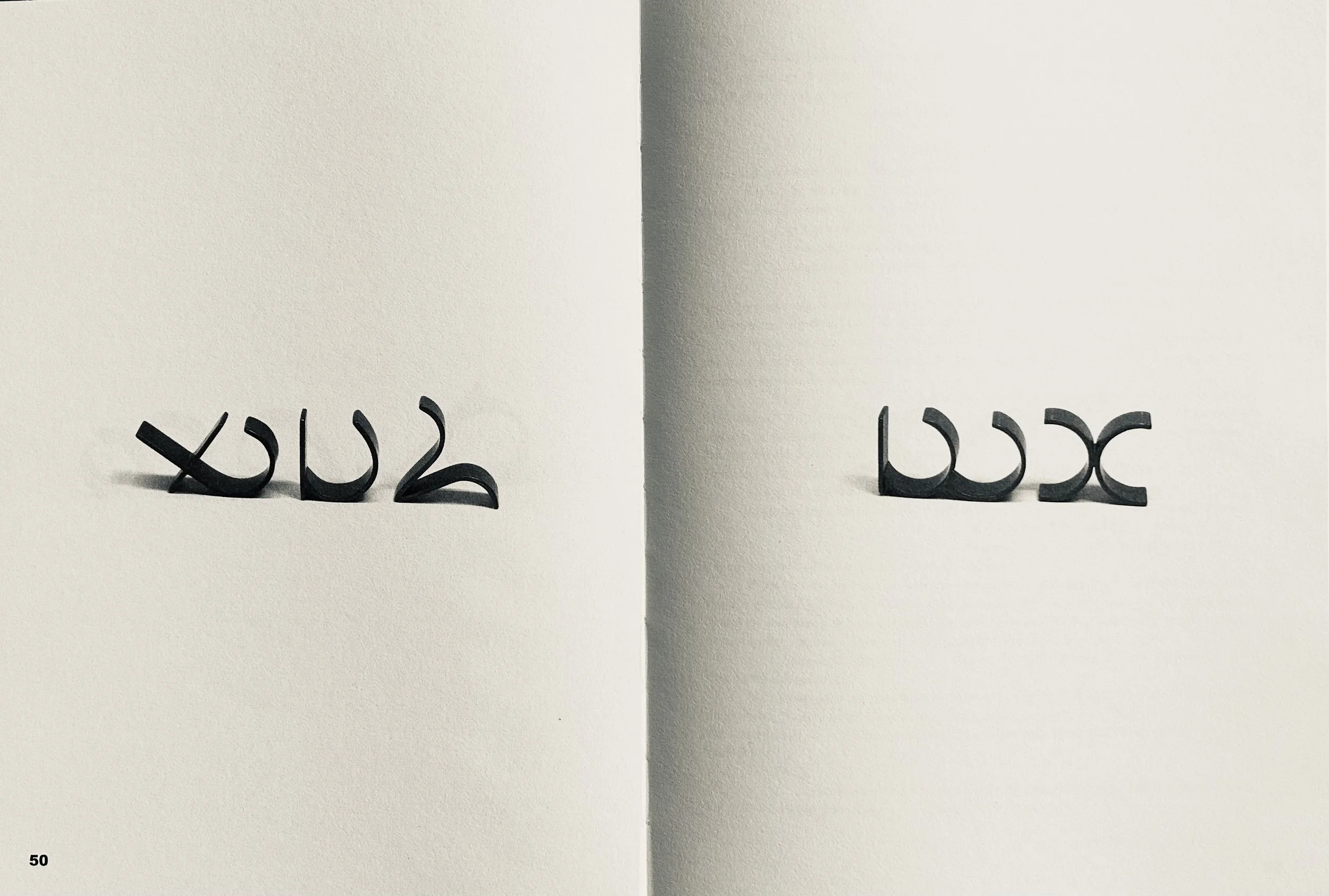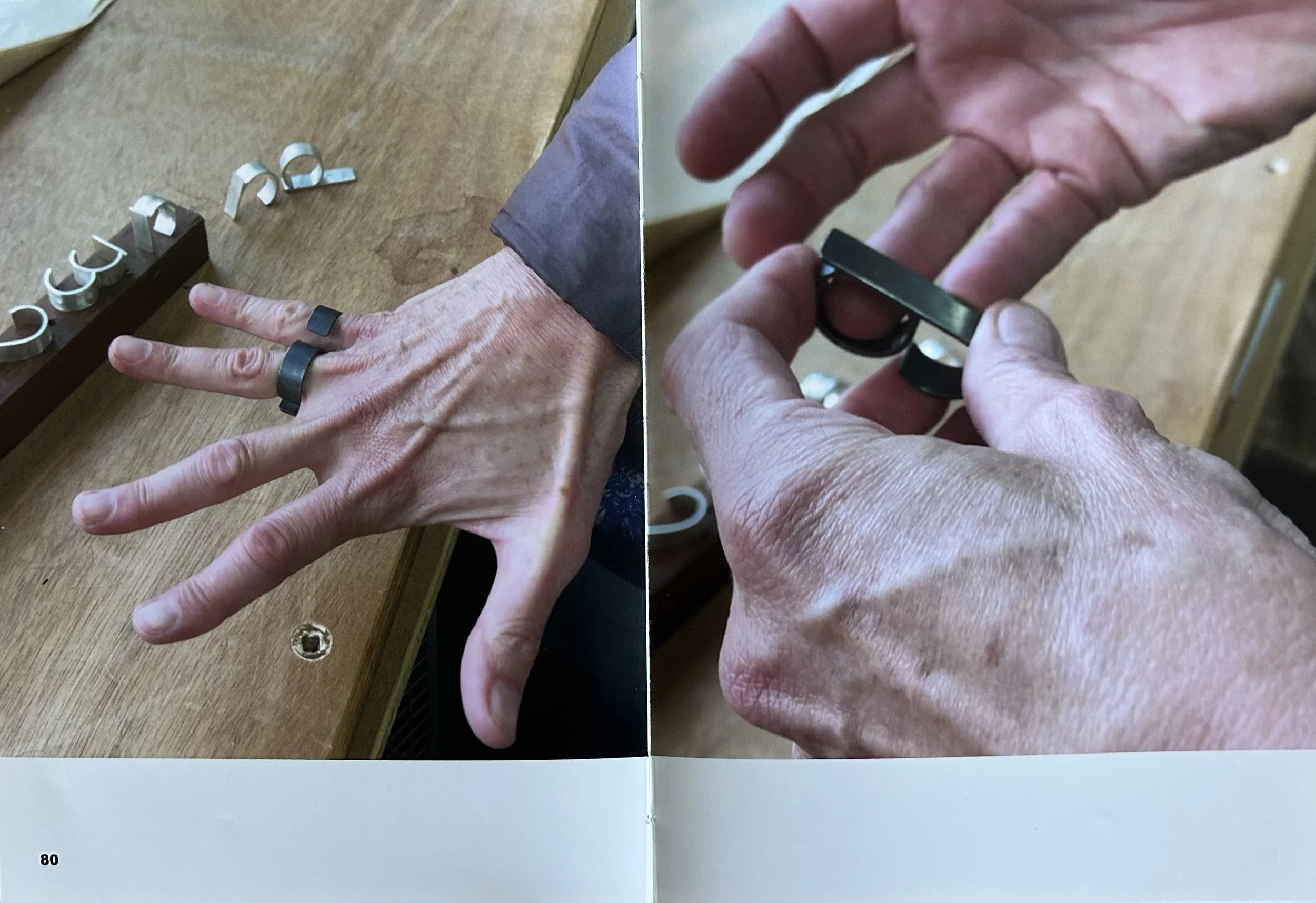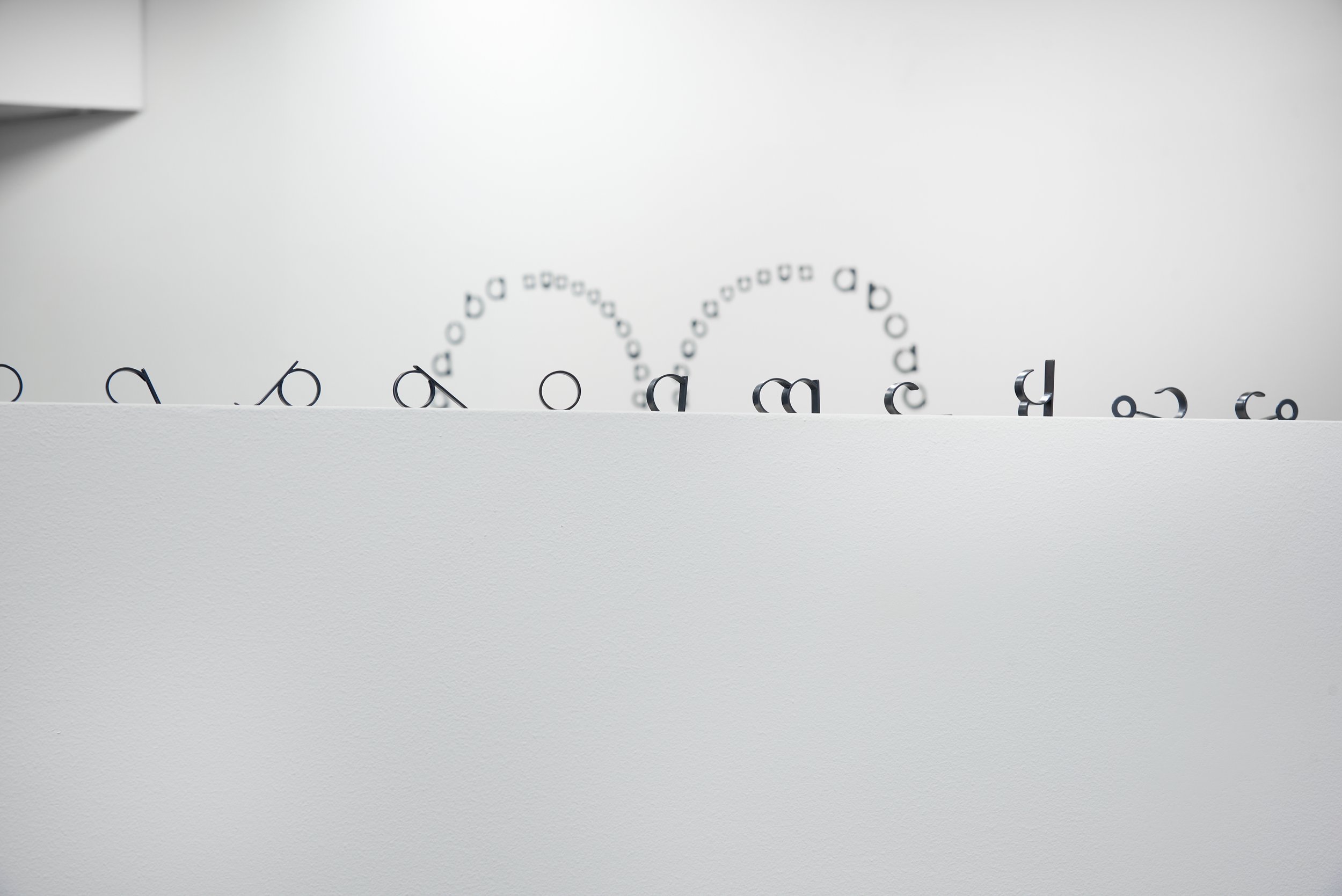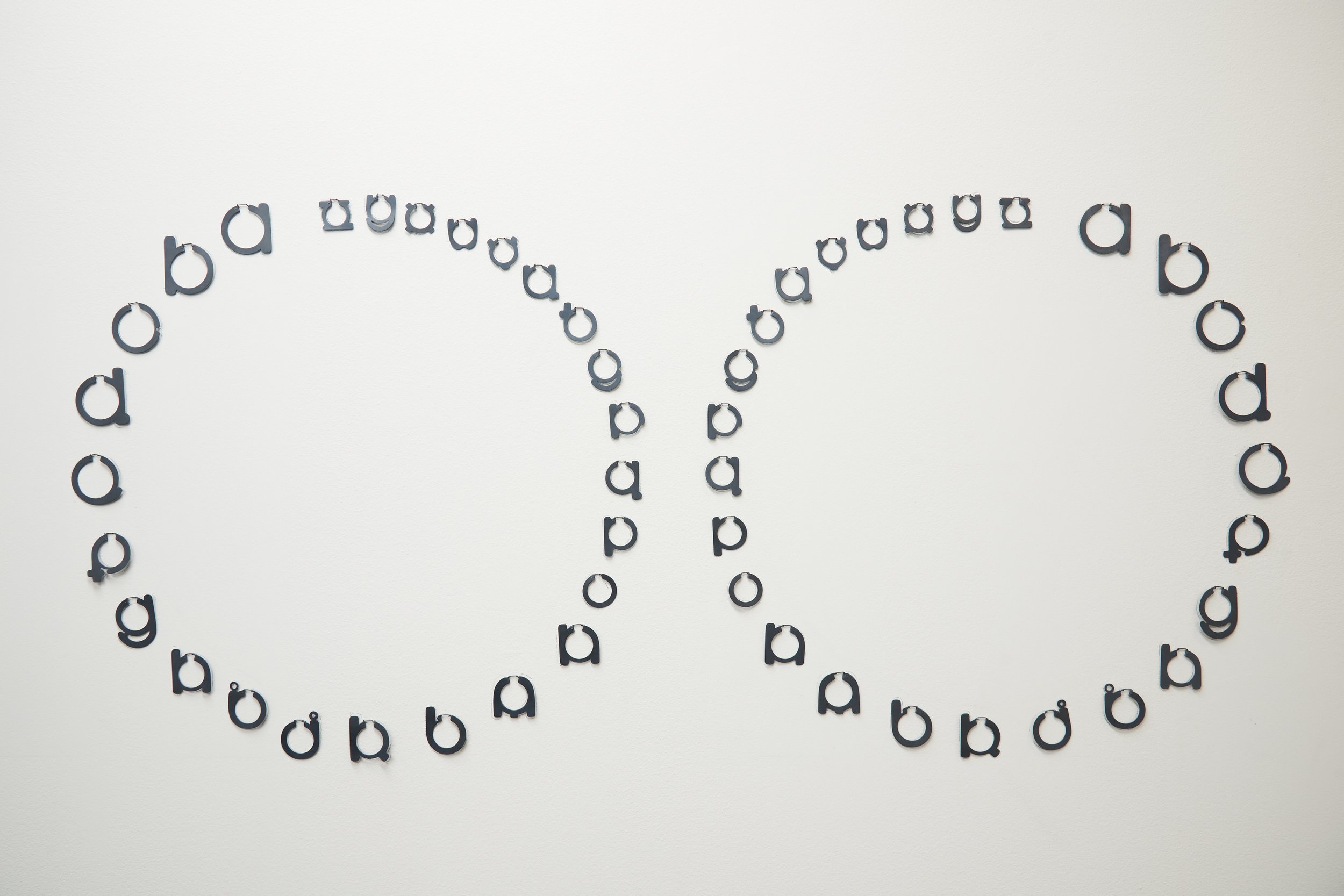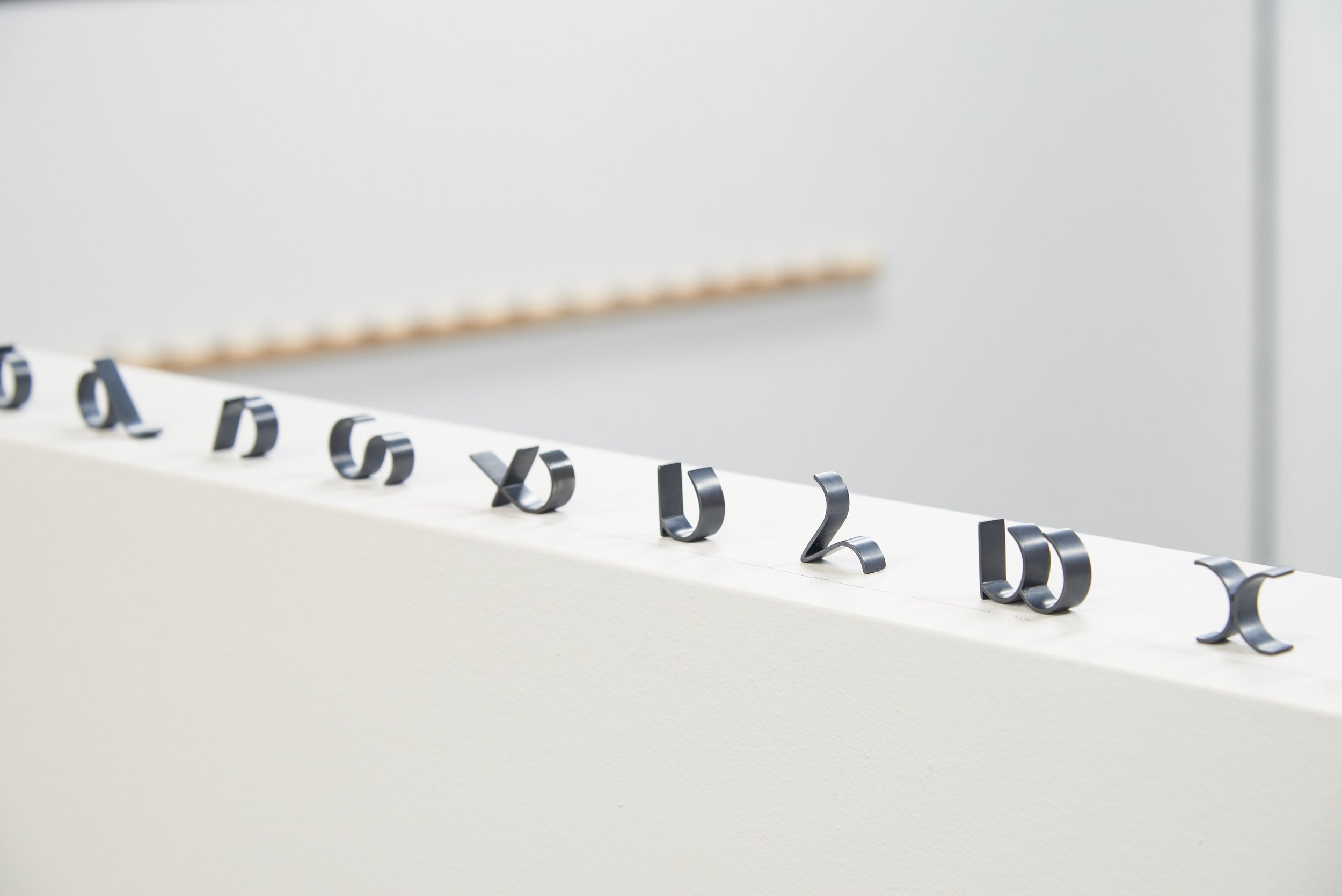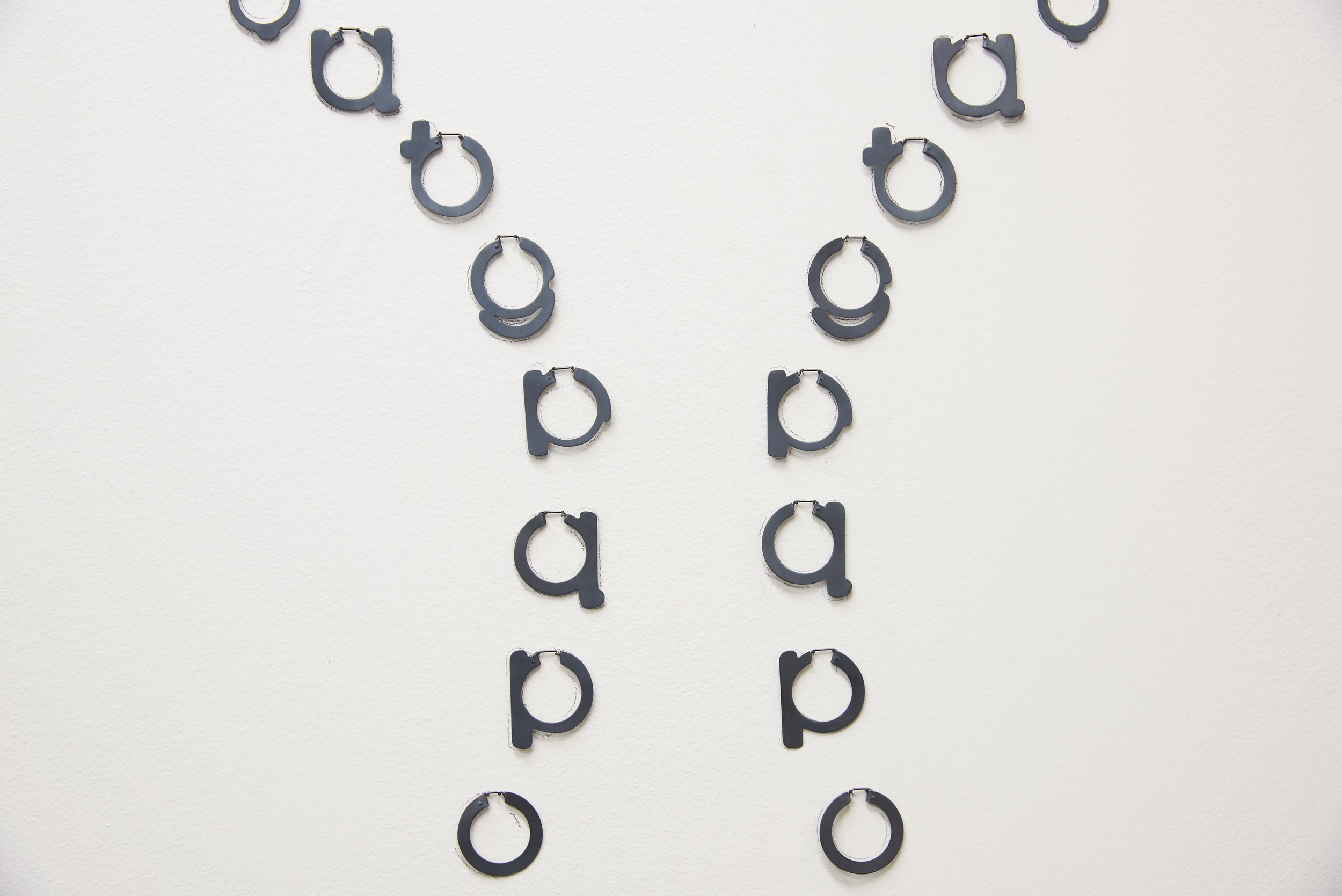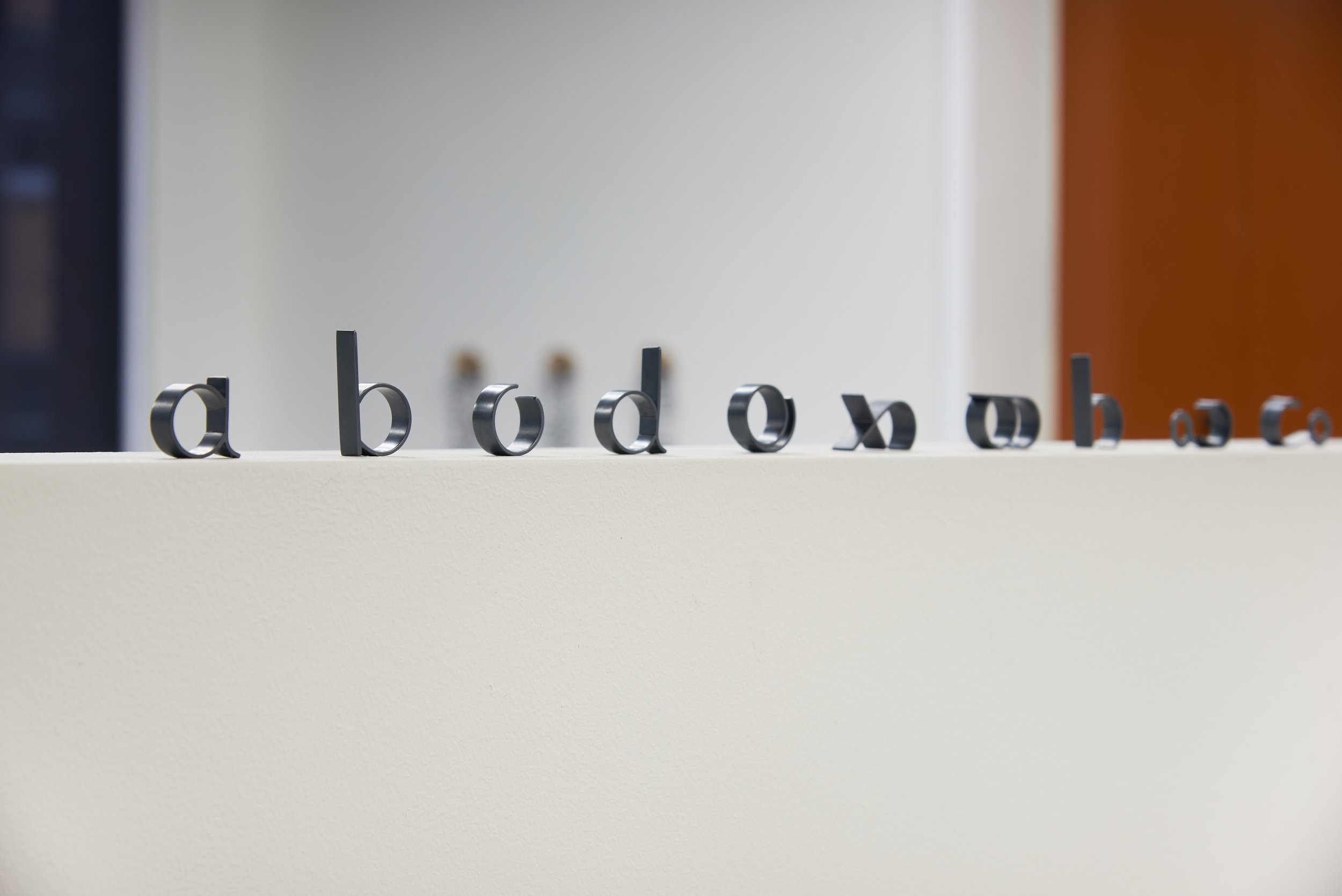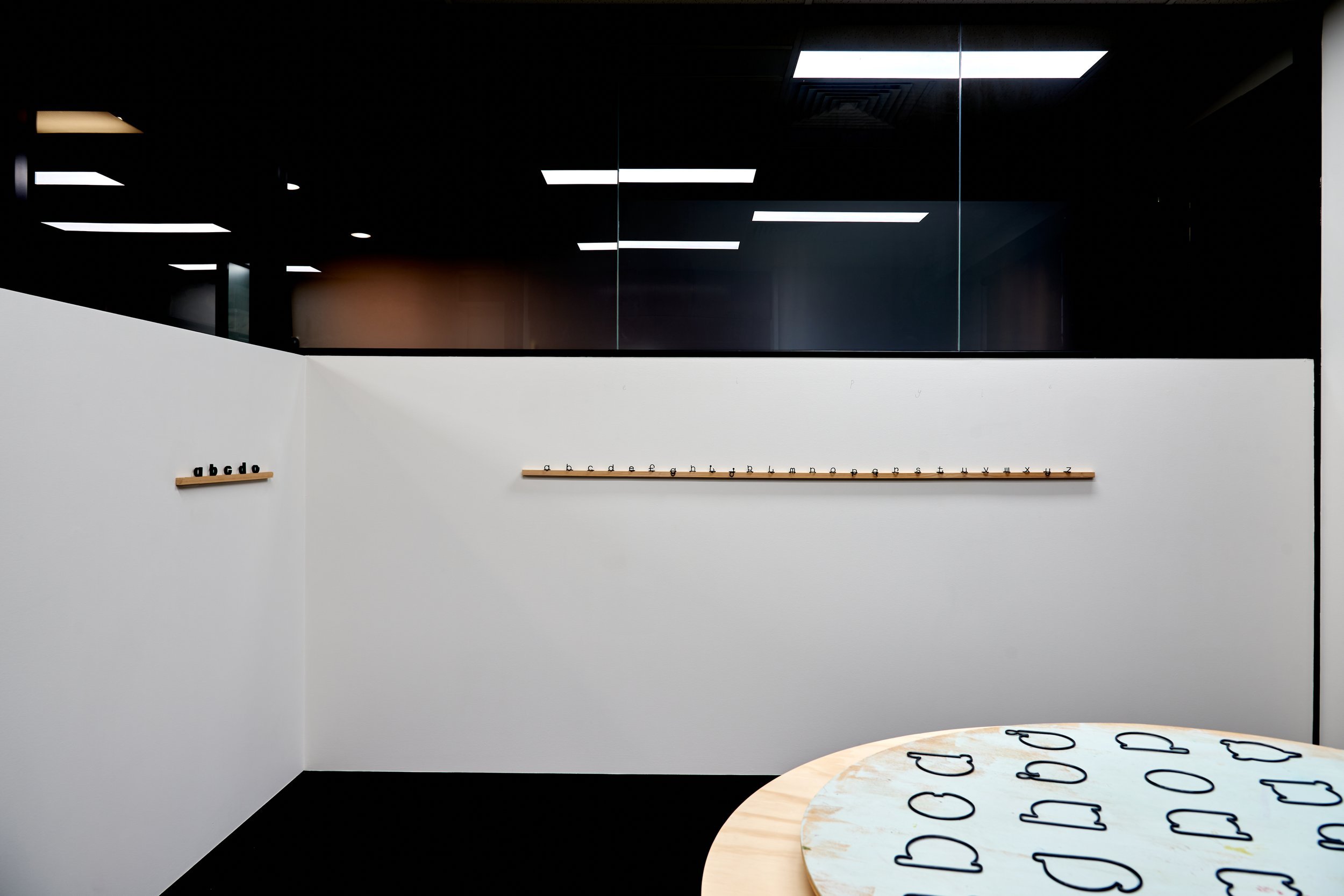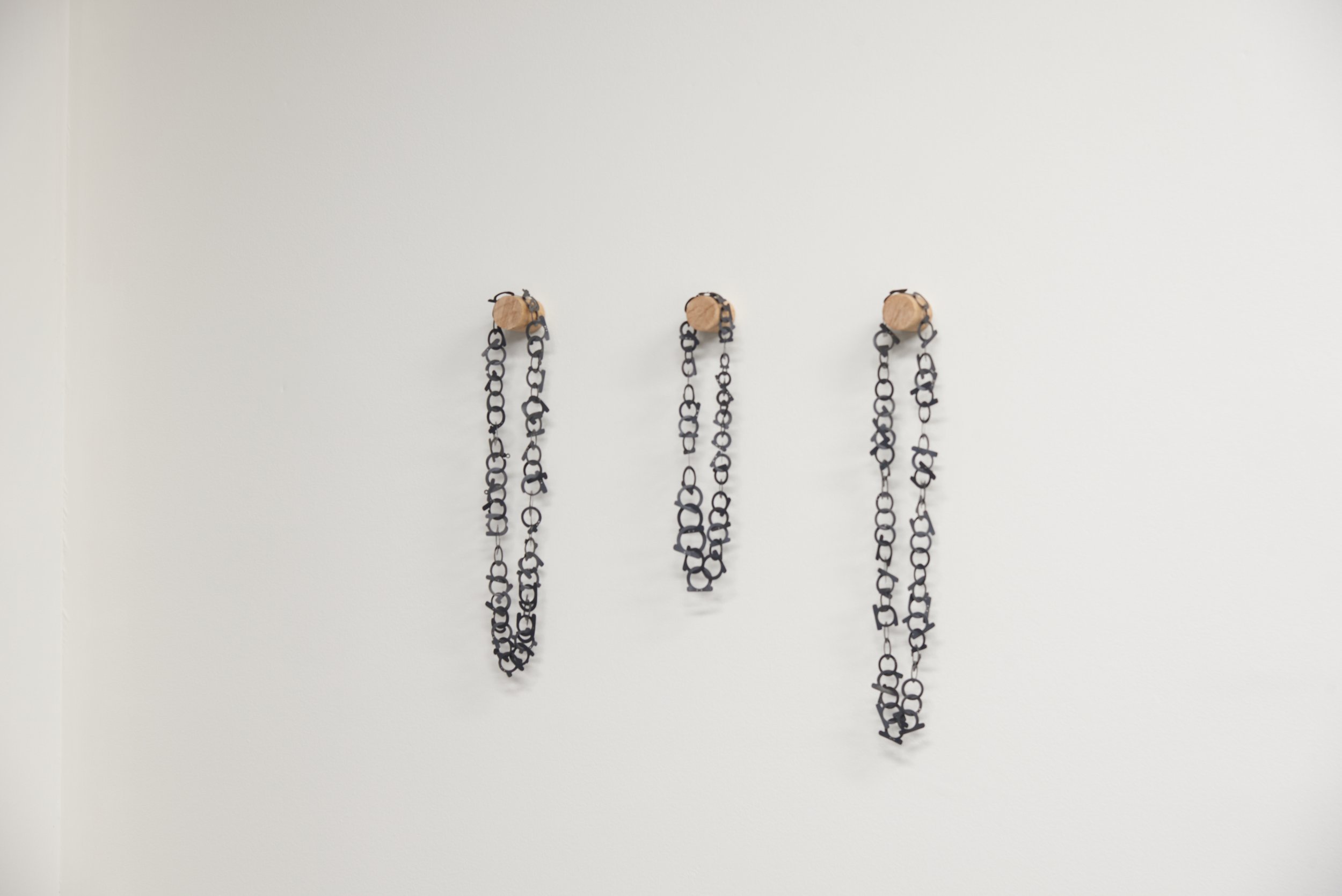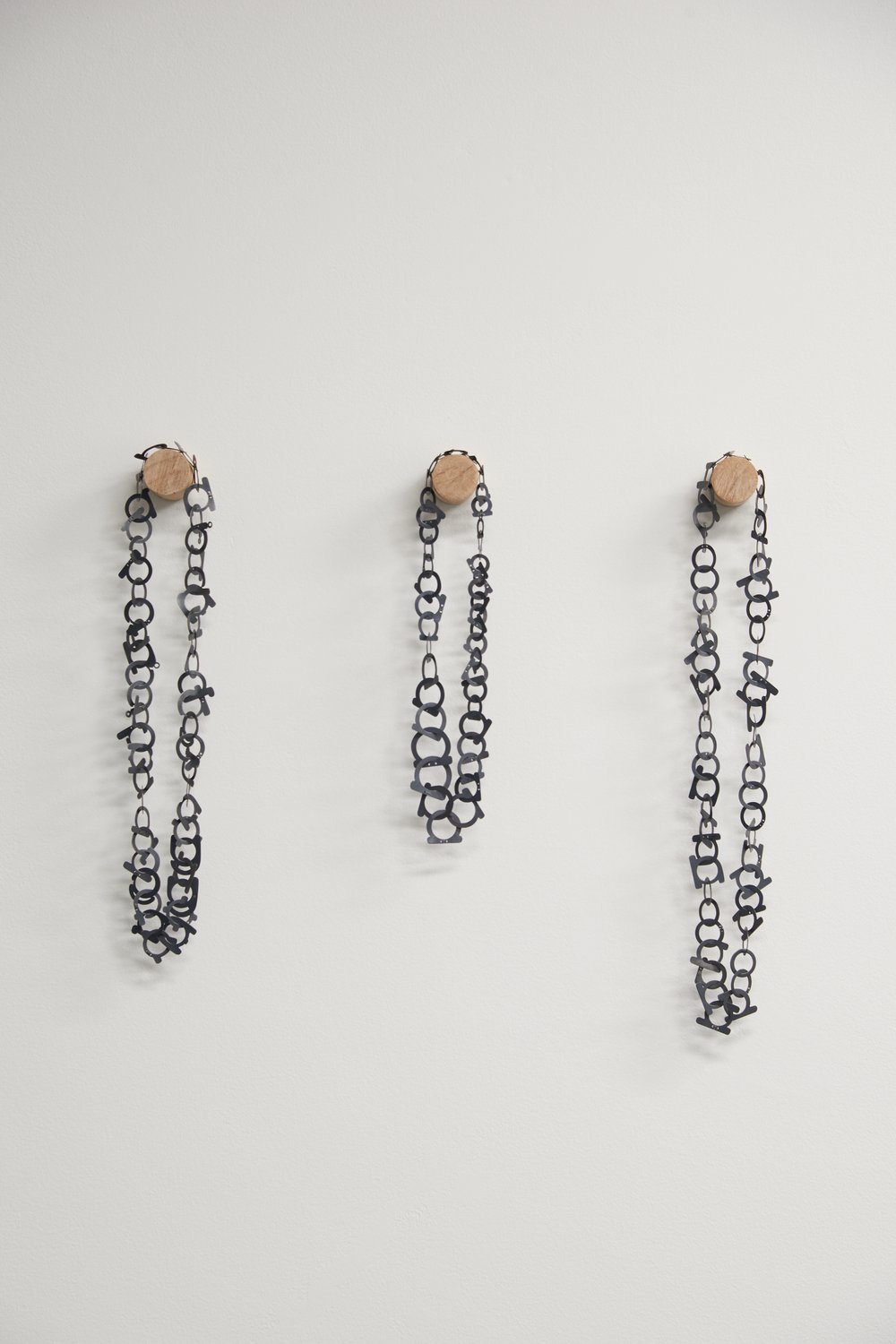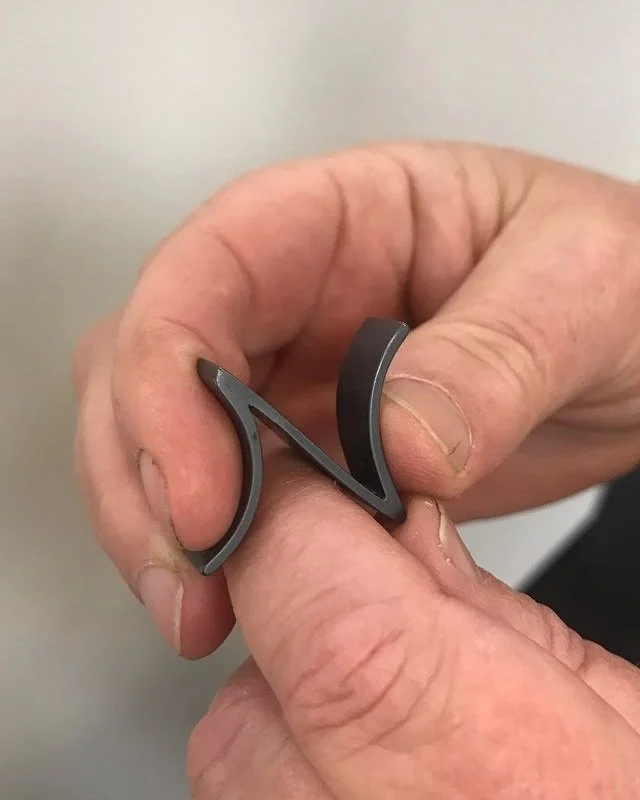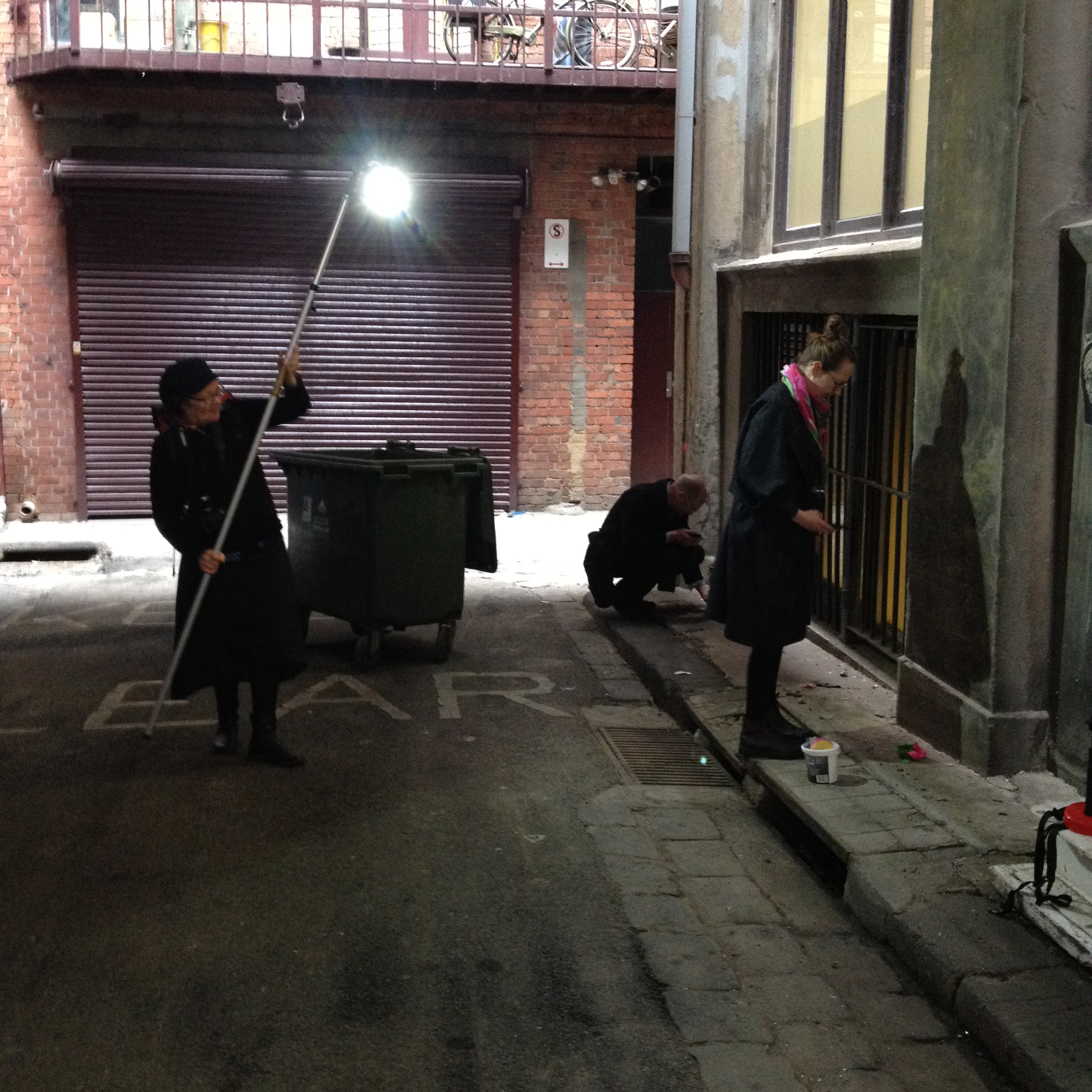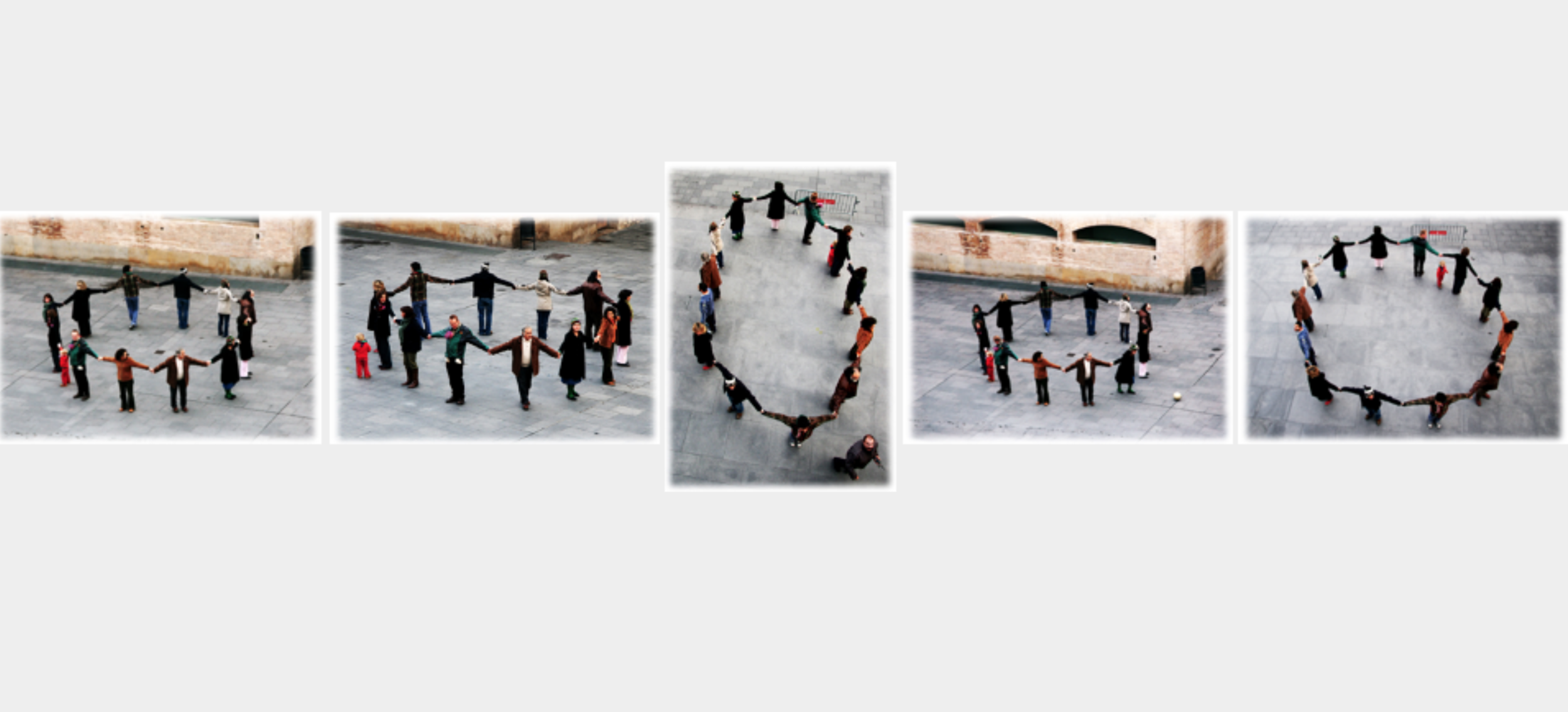The Making and Unmaking of Daisy Stop: Motion video (2017), Ring Manual (Object), charcoal wall text (Verb Chain), fact sheet (Foraging Links) & Fieldwork (short story)
Fieldwork
Anna and I met up for lunch in a Brunswick cafe, and in a breathless relay she tells me about her recent forays into the art world, and I tell her of my recent foraging exploits in rural Victoria. When I say recent I mean instructive – learning more about weed and fungi identification in community workshops. These efforts complement my existing range of fruits, fungi and greens I currently procure from over and under fences, or from just around the corner.
We arrange to meet up in a few weeks at DeChene Reserve to pick, slit, and thread daisies into chains and then through an advanced manoeuvre, consume – bite, chew, and then dispel as a continuous process (if possible). I think it sounds like fun but Anna is less convinced of the strange connection I’m making between adornment and nourishment. I’m not sure either, or at least how exactly my proposition will pan out. I try to reassure her with a quick summary of my knowledge. ‘Dandelions are well regarded as a bitter green. Leaves and flowers are high in vitamins and can be eaten raw in salads or cooked like other greens. They’re easy to identify’. I endeavour to reassure her by saying, ‘I’ll bring along a fact sheet’.
I arrive prepared with a chopping board and a paring knife. On second thought, I think they look too brutal for the genteel action we are about to commit. I packed them for Anna, being of artistic persuasion I wasn’t sure if she bit her nails – the keratinous extension of the thumb is the tool required to impart the split. Location, season, and weather are in alignment. It’s rained recently, the grass is long and lush and fortunately for us, the council mowing budget has always lapsed by this time of year. I indicate areas to avoid, along fence lines or landscaping furniture, rock features, and around trees. These I advise knowingly, are sites where dogs urinate and council workers spray poisons.
We begin harvesting. ‘Flowers and stems’, I offer in guidance, but Anna seems perfectly able to intuit this technique and we arrive back to where knife and chopping board are patiently waiting.
As a co-elaborator Anna is fantastic, her enthusiasm for the task is bountiful. Dandelion on the other hand seems to carry on with a mind of its own, coming untethered when faced with teeth, tongue, and jowl. Together we persist. Intuitively I follow the course of the action, feeding Anna dandelion flower heads, as she splits, threads, suspends then mouths, chomps, and chews them. Normally, making daisy chains from flowers is associated with innocence, tranquil past times, or green living. In our hands the activity becomes unfettered, the articulation of Anna’s jaw is sensational, ferocious, and carnal.
Anna and I met up for lunch in a Brunswick cafe, and in a breathless relay she tells me about her recent forays into the art world, and I tell her of my recent foraging exploits in rural Victoria. When I say recent I mean instructive – learning more about weed and fungi identification in community workshops. These efforts complement my existing range of fruits, fungi and greens I currently procure from over and under fences, or from just around the corner.
We arrange to meet up in a few weeks at DeChene Reserve to pick, slit, and thread daisies into chains and then through an advanced manoeuvre, consume – bite, chew, and then dispel as a continuous process (if possible). I think it sounds like fun but Anna is less convinced of the strange connection I’m making between adornment and nourishment. I’m not sure either, or at least how exactly my proposition will pan out. I try to reassure her with a quick summary of my knowledge. ‘Dandelions are well regarded as a bitter green. Leaves and flowers are high in vitamins and can be eaten raw in salads or cooked like other greens. They’re easy to identify’. I endeavour to reassure her by saying, ‘I’ll bring along a fact sheet’.
I arrive prepared with a chopping board and a paring knife. On second thought, I think they look too brutal for the genteel action we are about to commit. I packed them for Anna, being of artistic persuasion I wasn’t sure if she bit her nails – the keratinous extension of the thumb is the tool required to impart the split. Location, season, and weather are in alignment. It’s rained recently, the grass is long and lush and fortunately for us, the council mowing budget has always lapsed by this time of year. I indicate areas to avoid, along fence lines or landscaping furniture, rock features, and around trees. These I advise knowingly, are sites where dogs urinate and council workers spray poisons.
We begin harvesting. ‘Flowers and stems’, I offer in guidance, but Anna seems perfectly able to intuit this technique and we arrive back to where knife and chopping board are patiently waiting.
As a co-elaborator Anna is fantastic, her enthusiasm for the task is bountiful. Dandelion on the other hand seems to carry on with a mind of its own, coming untethered when faced with teeth, tongue, and jowl. Together we persist. Intuitively I follow the course of the action, feeding Anna dandelion flower heads, as she splits, threads, suspends then mouths, chomps, and chews them. Normally, making daisy chains from flowers is associated with innocence, tranquil past times, or green living. In our hands the activity becomes unfettered, the articulation of Anna’s jaw is sensational, ferocious, and carnal.

